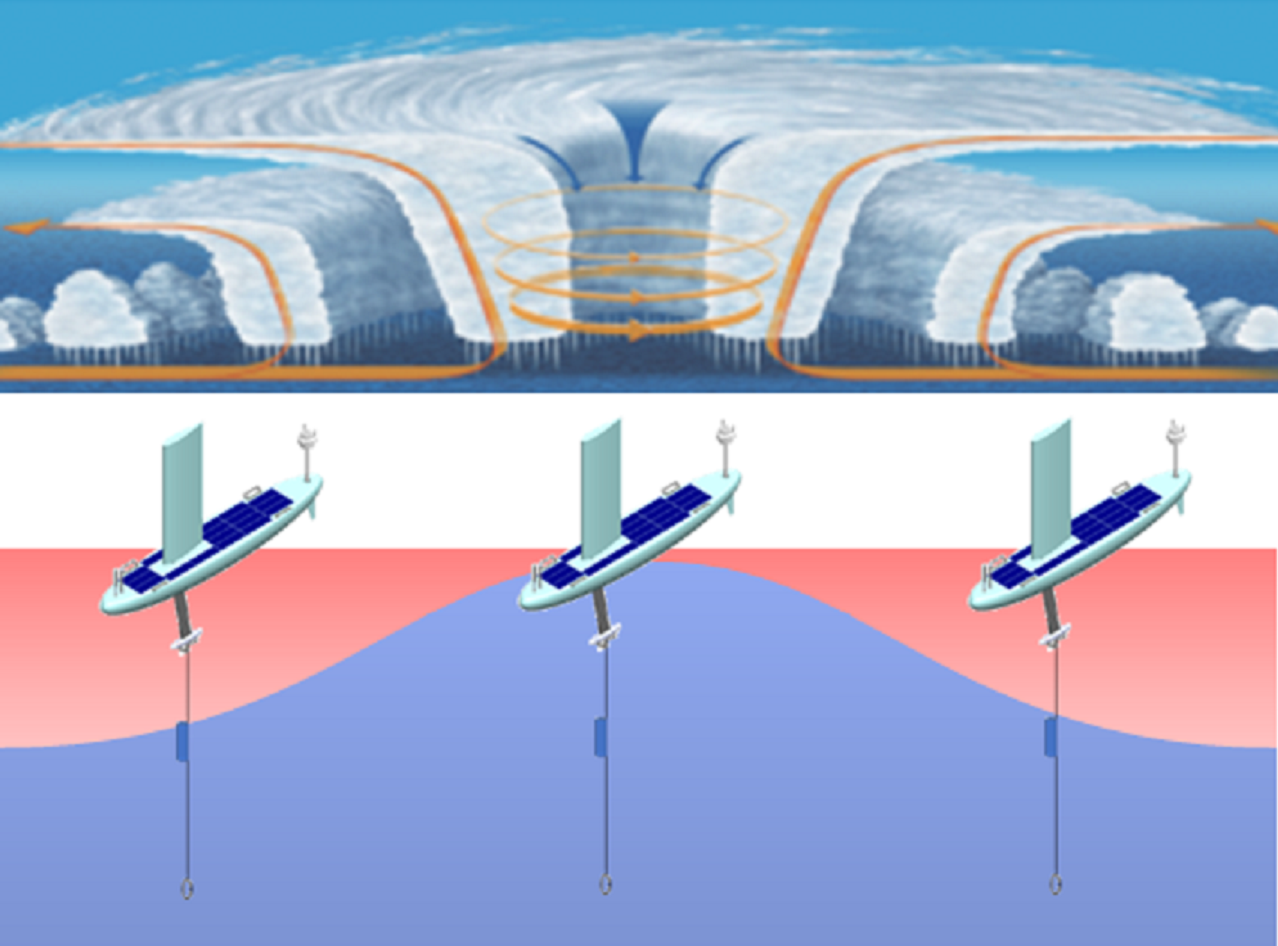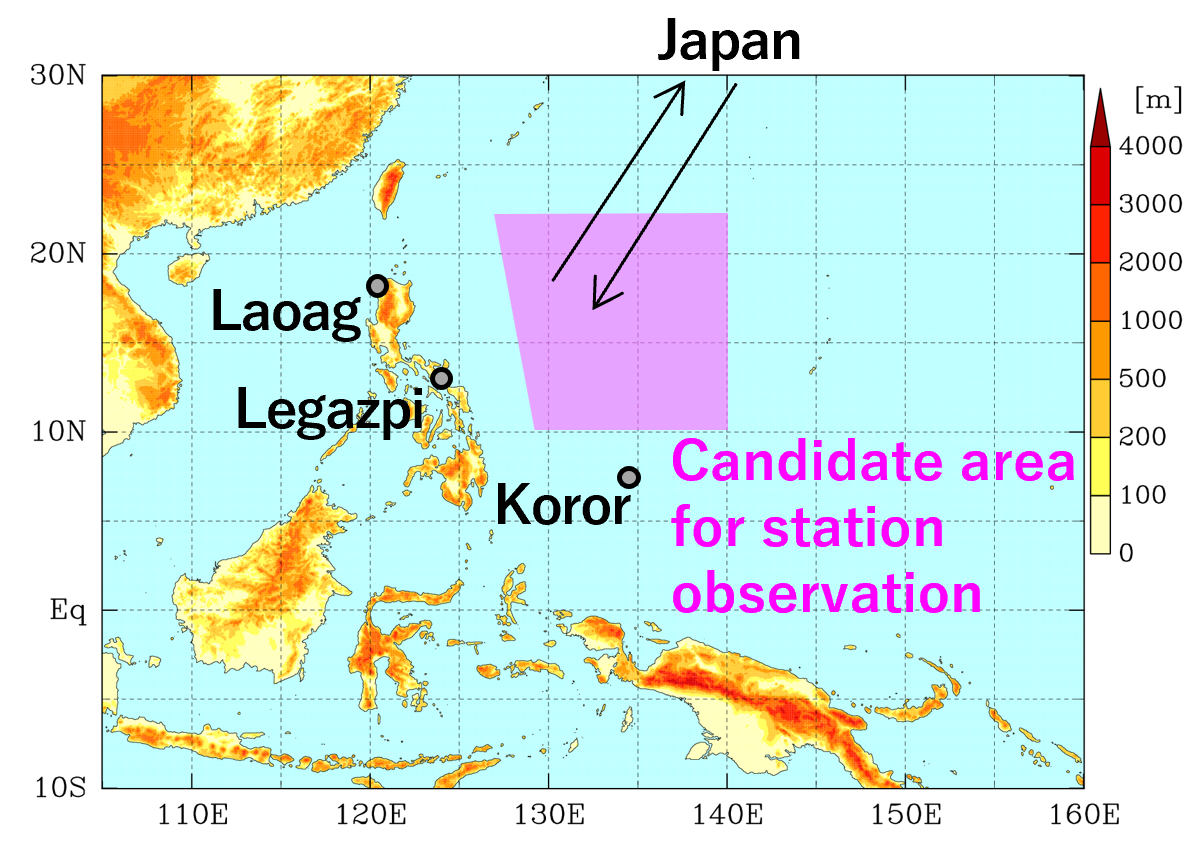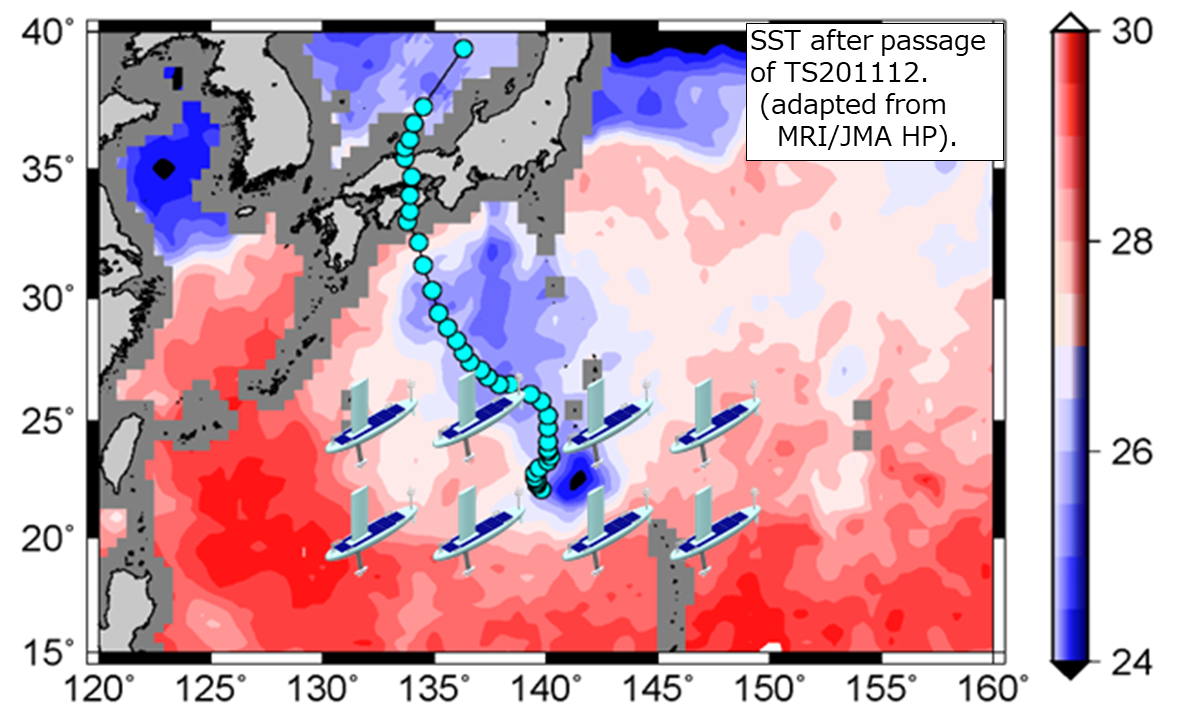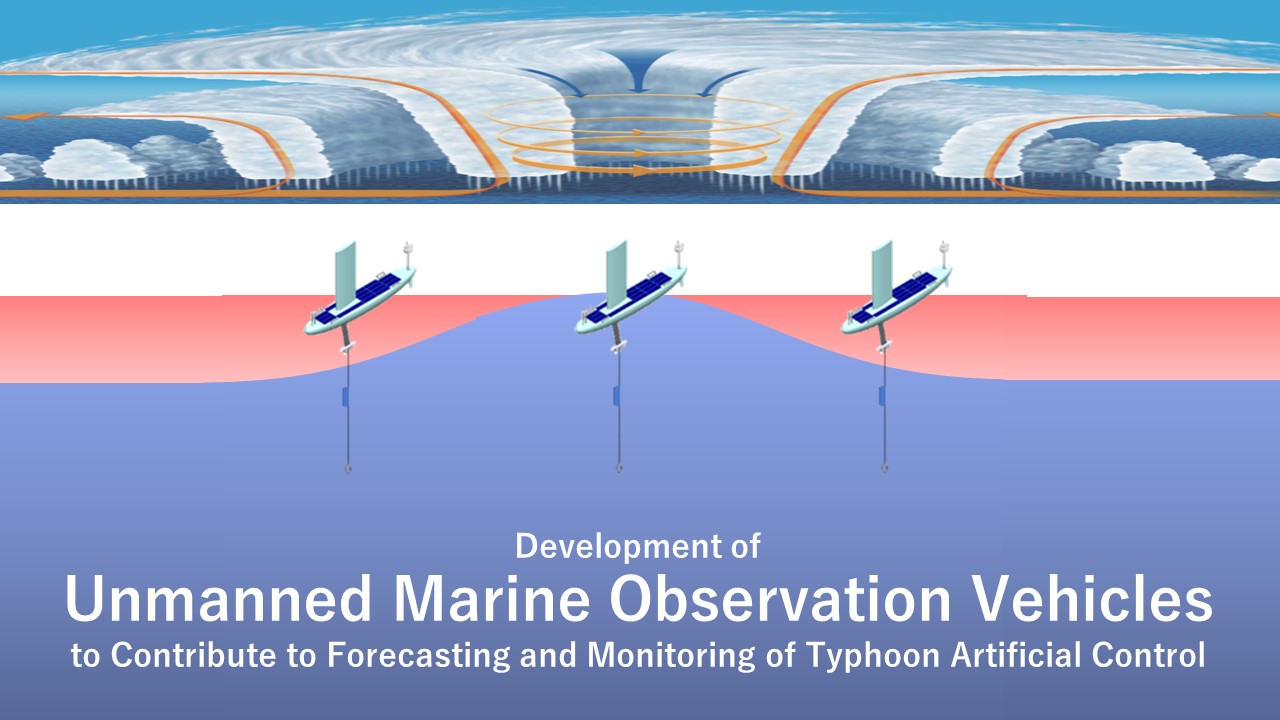|
|
|
|
This project aims to develop unmanned maritime observational vehicles (VM drones) that can be virtually moored near the area of a typhoon center for continuous observation of the sea surface layer down to a depth of 150 m and marine atmosphere as essential data for monitoring and forecasting of typhoon control. This is because it is difficult to continuously observe the detailed structure of the sea surface layer and marine atmosphere near the center of a typhoon using aircraft or satellites, although typhoons are generated and develop mainly due to the latent heat supply from the warm sea surface layer.
|
Back
• Background
- Artificial weather modification studies have started from 2022 funded by JST “Moonshot R&D Program”.
- We proposed to develop new USVs for typhoon monitoring as apart of typhoon modification study even though it is just a feasibility study, so far.
- Reasons why we proposed:
- No observation to obtain “true intensity” of typhoon over the western north Pacific after 1987 when US Air Force stopped flight observations.
- Much errors still reported in typhoon intensity (e.g., RMSE~10 hPa) by even in “objective Dvorak analysis” estimated by JMA operationally.
- Ocean heat content/TCHP should be monitored with higher resolutions for typhoon study.
- Saildrone and Bluebottle are too expensive for our research budget and too large to operate in/around our EEZ due to Japanese regulations, etc.
|

|
Doppler radar observation of TS200513 (Talim) during r/v Mirai cruise.
Even large research vessels (8,700 ton) can only get as close as 200 km from the typhoon center, making it impossible to obtain accurate (true) values of typhoon intensity, i.e., surface pressure and windspeed near typhoon center.
|
|
Back
• Scope of the project (JFY2022-2024)
- Develop new USV (VM drone) with following specifications:
- Size: 2~3 m in length, 1 m high (depth) of mast/sail (keel/centerboard).
- Cruise speed: 2~3 kt (expected)
- Operated autonomously to travel with typhoons a half-day to 1-day long (virtual mooring function).
- Waterproofing met. sensors: surface pressure, windspeed, temperature, and humidity.
- CTD sensor: profiling oceanic surface layer with a small winch.
- Unit cost: ~$0.1M (expected)
- Deploy VM drones over the tropical NW Pacific
- VMDs designed to be deployed/recovered from r/v Mirai or volunteer ships (easy handling).
- Compliant with Japanese regulations.
- Data and operation command obtained through the Iridium satellite communication.
- Maximum lifetime: ~ one year (disposal USV).

|
Schematic of VM drone deployment around center of a typhoon. Monitor surface met. and TCHP/ocean heat content before and after typhoon generation and/or its passages.
|
Back
• Schedule (only 3-years plan is funded)
- JFY2022:
Basic design and assembly prototype #1. Testsin factory lab. and coastal sea in Japan.
- JFY2023:
Assembly #2 for operational test in NW Pacific (~1 week w/ #1) deployed from r/v Mirai for functionality check and further improvement.
- JFY2024:
Assembly #3-4 for long-term (1 year w/ #1-2) operational test in NW Pacific in collaboration with r/v Mirai air-sea interaction study over the eastern side of Philippines (July-August).
 |
 |
| Planned track and fixed obs. points of r/v Mirai 2024 1-month cruise (Jul.-Aug.). |
Conceptual schematic VM drone array which can monitor surface meteorology and TCHP before/after typhoon passages.
(Modified from Fig.2 (SST observed with a satellite-borne microwave radiometer on 2 Sep 2011 and the best track of Typhoon Talas)
of a website of Department of Typhoon and Severe Weather Research, Meteorological Research Institute: https://www.mri-jma.go.jp/Dep/typ/awada/TyphoonSST.html )
|
- JFY2025 - : (no specific budget, T.B.D.)
Develop operational type and deploy them in array of 5 deg x 5 deg over the NW Pacific to contribute other “typhoon control” study group.
Back
|




